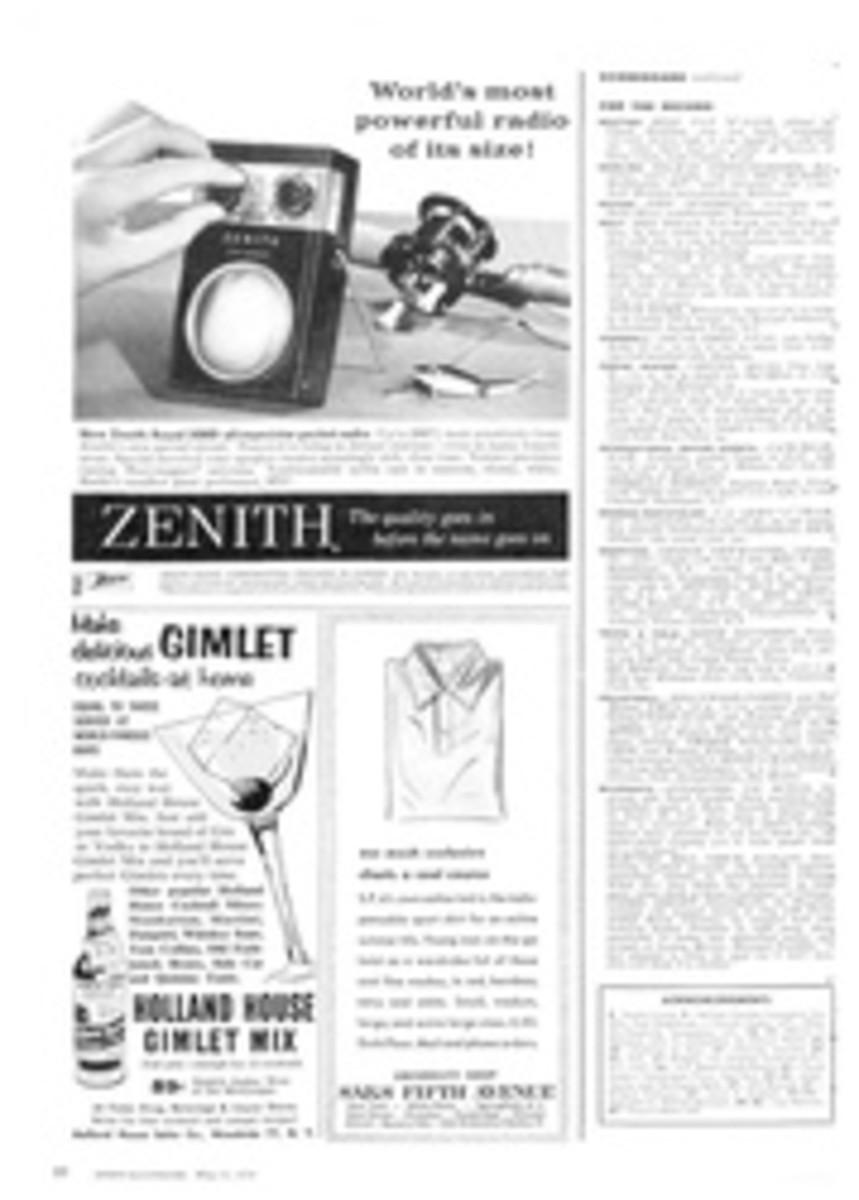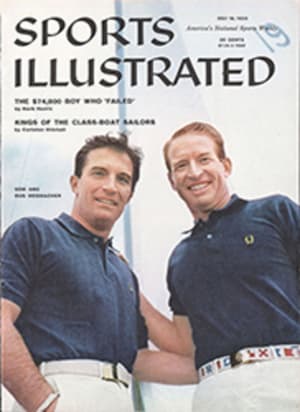
Sam Morse makes a rarebit
My father used to make this dish when I was a boy in Newton, Massachusetts," said Sam Morse, as he got together the ingredients for a Welsh rarebit in the gleaming kitchen of his new house at Pebble Beach (see above). The kitchen windows overlook the first hole of the Pebble Beach golf course and provide a breathtaking view of the Pacific through fringes of tall Monterey pines. It was an appropriate backdrop for the man who is responsible more than any other for the development of the Monterey Peninsula, 140 miles south of San Francisco, as one of the world's great settings for golf.
In the presence of Sam Morse, ruddy of complexion, twinkling of eye, vigorous as a man of 40, it is hard to project one's thoughts back over all the years to the boyhood of which he spoke, hard to believe that this man could have captained the Yale football team way back in the year 1906, and that California first felt the impact of his extraordinary vitality when he arrived here to seek his fortune in 1907. In those days people used to exclaim when they saw his full signature, Samuel F. B. Morse, and ask the inevitable question. Yes, he is a grandnephew of the inventor. Today Californians have pretty well forgotten about the father of the telegraph; a reference to Samuel F. B. Morse indicates more often than not the colorful citizen—now 75 years old—who rules like a feudal prince over the fabulous Del Monte properties, comprising the larger part of the Monterey Peninsula.
These properties, which Morse controls as chief stockholder, include 100 miles of roads, 90 miles of bridle paths and no less than five golf courses. (The annual Crosby Invitational Tournament is played over three of these—the Monterey Peninsula Country Club, Cypress Point and Pebble Beach.) "The finest meeting place of land and water in existence" was the way Robert Louis Stevenson described the peninsula after a visit. This was before the first golf course was established here in 1897—it is now part of the Del Monte Country Club course—and long before the modern era of golf as a great national pastime. In the latter part of the 19th century, undeveloped land on the Monterey Peninsula sold at $5 an acre. Today an acre of land in Sam Morse's domain is worth a minimum of $4,000.
A friend described Morse some years ago as "a complete extrovert; he thinks from the skin out. He likes to eat, he likes to drink, he likes to pick a fight...." The description I found to be only partly accurate. The zest for living is there, all right, undiminished by the fact that he now is a great-grandfather. But so is a surprising sensitivity—evidenced by the agreeable landscapes in oils that he paints as a hobby and by hi? advanced accomplishments in the culinary art.
The lovely house at Pebble Beach which he occupies with his third wife, Maurine, was designed by Honolulu Architect Albert Ely Ives in that contemporary Hawaiian style, greatly influenced by the Oriental, which seems exactly right for a California setting. Mrs. Morse herself is a skilled decorator, and I had a charming impression of flower-filled patios, gold-colored screens, brilliant cushions and flocks of delicately hovering Japanese maids. The kitchen is an absolute dream of view windows, "peninsula" counters, waist-high ovens and broilers, lavender-gray Formica surfaces and specially designed wall tiles with lavender squiggles on them. There is also a large mirror. "I have always insisted on this," said Morse. "Do you know, the cook cooks better if she knows she looks well!"
He explained that he had a wonderful cook here and only made Welsh rarebit occasionally for his friends when she was out. At his ranch in the Carmel Valley things were different. Here the Morses give spectacular parties, with Sam taking over all the cooking. Lucky guests are surprised with such delicacies as boned wild boar flattened out and cooked over a barbecue pit, basted with honey and butter. Or the day's dish might be wild duck which has been marinated in red wine and shallots, or tenderloins of beef that have been treated to Madeira and mustard. The Morse pancakes, thin as crepes, are perhaps his masterpiece. "The trouble is," he says, "they go like wildfire, and I'm never able to get any to eat myself."
But to return to that Welsh rarebit (or Welsh rabbit, if you prefer, which is believed to be the original name for this simple English savory):
"I wise people up constantly about this dish," said Mr. Morse. "I mean how not to make it stringy. Cheese must be melted over low heat, of course, and the mixture must be stirred constantly and removed from the fire as soon as possible. You may use a double boiler or a chafing dish. I have a beautiful bronze one that '21' gave me (see color picture), but I am often too lazy to use it because I can make Welsh rarebit even in a frying pan. The eggs make the dish somewhat foolproof, and the beer makes it the authentic article. Remember, though, the great danger is overcooking."
Here is the specific recipe according to Sam Morse.
WELSH RAREBIT (for four)
Take 1¼ pounds of yellow rat cheese—the kind that comes in wheels—or else aged cheddar or, in the West, Tillamook cheese. Cut into thin slices or grate coarsely. Put a thick pat of butter in your chafing dish or double boiler to melt slowly. Stir in the cheese and continue stirring over low heat. When the cheese is almost completely melted, pour in a quarter of a bottle of beer (3 ounces) and stir rapidly. As it foams, add two slightly beaten raw eggs and, beating vigorously, a dash of Worcestershire sauce and a sprinkling of paprika. Remove from fire and pour over hot toast.
PHOTO
LOUISE DAHL-WOLFE
PHOTO
PLAYING HOST TO IKE at Cypress Point Club in 1956, Samuel F. B. Morse chats with his distinguished guest, who had just tested Monterey Peninsula golf course.

